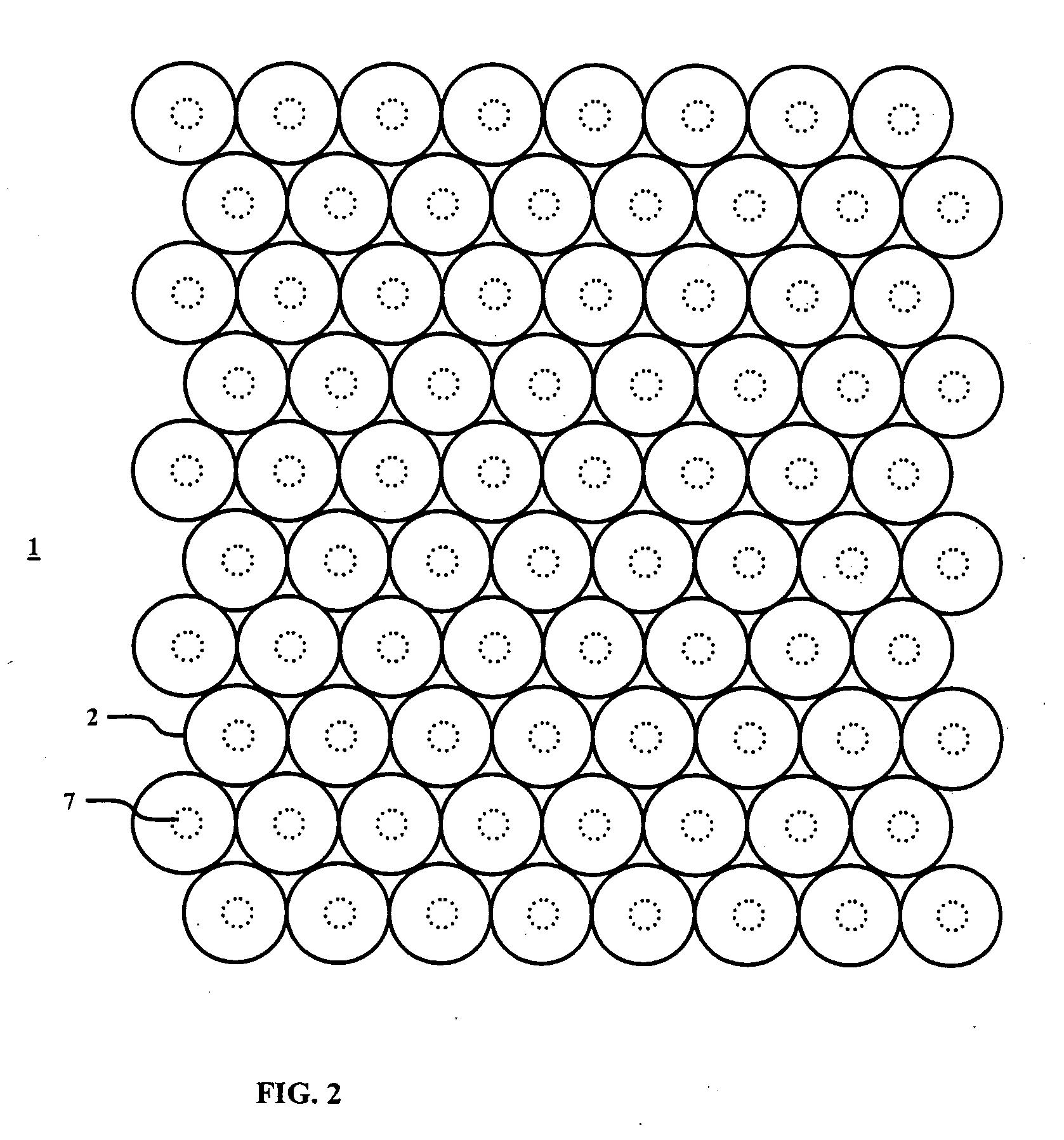Collimating microlens array
a collimating film and microlens technology, applied in the field of collimating microlens arrays, can solve the problems of difficult manufacturing of microlens collimating films, inability to tailor or modify the shape of emission envelopes to suit the desired shape of the intended backlight application, and small apertures, etc., to achieve high output luminance, easy manufacturing, and high lumen efficiency
- Summary
- Abstract
- Description
- Claims
- Application Information
AI Technical Summary
Benefits of technology
Problems solved by technology
Method used
Image
Examples
Embodiment Construction
[0045] A description of preferred embodiments of the invention follows.
[0046] In one embodiment, the present invention includes a film with a substrate, a lens array on the output side of the film, and a specularly reflective layer—with apertures at or near the focal positions of the lenslets of the lens array—installed on the input side of the film. Additionally, a light absorbing layer—with similar apertures—can be installed between the substrate and the reflective layer to facilitate aperture formation and stray light absorption. Furthermore, the specularly reflective layer may include layers of dielectric and / or layered metallic materials.
[0047] Other embodiments of the invention are directed to methods of making such films. The specific methods involve the use of a laser to ablate apertures in the collimating film.
[0048] Referring to FIG. 1, the collimating film 1 is shown to be made from a substrate 4, a lens array 3 comprised of a plurality of individual lenslets 2, an opt...
PUM
 Login to View More
Login to View More Abstract
Description
Claims
Application Information
 Login to View More
Login to View More - R&D
- Intellectual Property
- Life Sciences
- Materials
- Tech Scout
- Unparalleled Data Quality
- Higher Quality Content
- 60% Fewer Hallucinations
Browse by: Latest US Patents, China's latest patents, Technical Efficacy Thesaurus, Application Domain, Technology Topic, Popular Technical Reports.
© 2025 PatSnap. All rights reserved.Legal|Privacy policy|Modern Slavery Act Transparency Statement|Sitemap|About US| Contact US: help@patsnap.com



